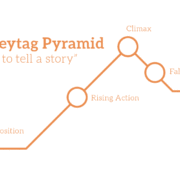Critique: Invitation to Collaboration
Why Critique?
We often have a romantic idea of how the design process works — that designers emerge from their creative place with an idea fully formed. In the early stages of any new project, a designer has to make a large number of rapid decisions that will inform the final state and success of the project. The blank canvas necessitates early exploration and trials, but looming deadlines raise the stakes. The ticking clock often means we designers resort to techniques and styles that are familiar and comfortable. It’s a lot of pressure to place all of those decisions on one back. Enter the design critique.
Critique as Collaboration
Critique is an opportunity to test new ideas and a checkpoint to ensure the design solution meets the objectives the client laid out in the beginning. Critique is an invitation into the design process, extended to your team, to help you refine and improve upon your work. The introduction of other perspectives into the process often brings breakthroughs and eureka moments, a result of the intersection of new ideas. Your colleagues will also be valuable navigators who can help you correct course when the project wanders away from the stated objectives.
Facilitating an effective design critique with your team takes some careful thought, especially if you want to feel that collaborative glow rather than a process train wreck. To those ends, it’s helpful to establish a few roles at the beginning. You’ll want to identify the designer in charge of the project—the designer who will be responsible for taking the feedback received and implementing it. This designer will also likely be the person best equipped to introduce the project. Secondly, you’ll want someone in charge of facilitating the critique process. It will be very tempting to run off on creative tangents and the facilitator will have to reign those in when they do happen. They’ll need to keep everyone on task, and make sure feedback is delivered objectively and in a helpful format.
Here’s a basic outline of how a critique could be run:
Briefing
The designer or owner of the project should briefly introduce the project. This should include client needs, communication goals, limitations and intended use of the design. The goal is to ensure the group understands the problem and the initial approach to developing a solution. The facilitator should keep things moving, and ensure the conversation does not wander. Don’t let the designer explain every little detail — it will eat up a lot of time, and might color the feedback others give later in the critique.
Review
The team should be given time to consider the design solution and ask questions of the project owner. The facilitator should encourage group members to write down their notes and suggestions, but save them for later in the critique process. The goal at this stage is to simply become acquainted with the project and gather information before assessing the design’s effectiveness.
Reflect
At this stage, it’s helpful to take some time for team members to silently assess their notes and suggestions and remove any subjective reactions to the work. It may be helpful to consider the following:
- Does the solution presented address the problem stated in the briefing?
- Is anything missing from the solution that could still be implemented?
- Avoid getting caught up on small aesthetic details, unless the designer/owner has specifically requested feedback in that area.
Collaborate
Finally, it’s time to get vocal. Having created notes and reactions in relation to the goals of the project, they are ready to be shared with the team. It’s helpful to share both positive and negative feedback. Positive feedback is especially useful because it helps identify parts of the design that are working well and ensures these parts don’t accidentally get scrapped. At this time, the designer should take notes and generate a task list of things to tackle once the critique ends.
Critique is a skill that develops with practice. Your team will continue to provide better feedback when you continue to include them in your creative process. As a team, you’ll come to develop a common vocabulary and criteria for assessing the work that you do. And as a team you’ll see greater ownership and investment in good process and good work.
Brady is a graphic designer at Matt Jensen Marketing.







